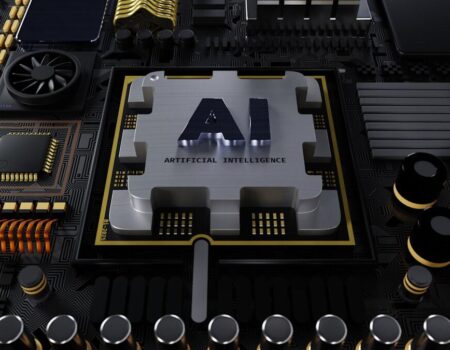
The Shift in AI Investment: From Hardware to Software in 2025
This week’s analysis explores the evolving landscape of AI investment, where the focus is expected to transition from hardware and infrastructure in 2024 to software and applications in 2025. As the industry moves beyond building foundational AI systems, the next phase is anticipated to be driven by software innovations that maximize the utility of these advancements.
The Dominance of Hardware in 2024
In 2024, hardware and infrastructure companies, such as NVIDIA (NVDA), experienced significant growth, fueled by rising demand for AI computing power. Businesses invested heavily in AI infrastructure to support large language models (LLMs) and generative AI applications. However, recent market trends suggest that while AI hardware investment remains strong, its growth rate is stabilizing. This shift signals a growing emphasis on leveraging existing infrastructure through software-driven applications.
Why Software is Poised for Growth
Cathie Wood, CEO of Ark Investment Management, has highlighted the potential for AI software to generate substantial revenue. She estimates that for every dollar spent on AI hardware, software providers could generate eight dollars in revenue. This perspective underscores the increasing importance of AI-driven applications in unlocking value for businesses.
According to Proactive Investors, software firms like Snowflake (SNOW), Elastic (ESTC), and Palantir Technologies (PLTR) are well-positioned for the next growth phase in AI. While infrastructure remains essential, the real potential lies in applications that enhance productivity, improve customer experiences, and streamline operations.
Zacks reports that enterprise adoption of AI software is accelerating as organizations seek user-friendly solutions with clear return on investment (ROI). Key trends driving this shift include:
- Generative AI Applications: AI-powered tools, such as ChatGPT, are inspiring industry-specific innovations in marketing, analytics, and customer engagement.
- Vertical AI Solutions: Sectors like healthcare, finance, and retail are investing in AI-driven applications tailored to their unique challenges.
- Automation and Workflow Optimization: AI-powered automation tools are gaining traction in enterprises looking to improve efficiency and reduce manual workloads.
Companies to Watch in 2025
Industry experts have identified several AI software companies that stand to benefit from this transition:
- Snowflake (SNOW): Snowflake’s integration of generative AI capabilities into its data cloud platform makes it a leading choice for enterprises seeking advanced data analysis solutions.
- Palantir Technologies (PLTR): Specializing in AI-driven decision-making software, Palantir is expanding its reach across government, healthcare, and defense sectors.
- Elastic (ESTC): Leveraging AI to enhance search and data visualization tools, Elastic is becoming a key player in enterprise AI applications.
- Amazon (AMZN): Recognized for its broad AI strategy, Amazon continues to invest in AI infrastructure, large language models, and software applications to solidify its position in the industry.
As 2024 draws to a close, the AI sector is witnessing a shift from a hardware-driven expansion to a software-centric growth phase in 2025. While macroeconomic uncertainties and inflation remain potential risks, AI software firms present scalable, high-margin opportunities that investors should closely monitor in the coming year.






No Comment! Be the first one.